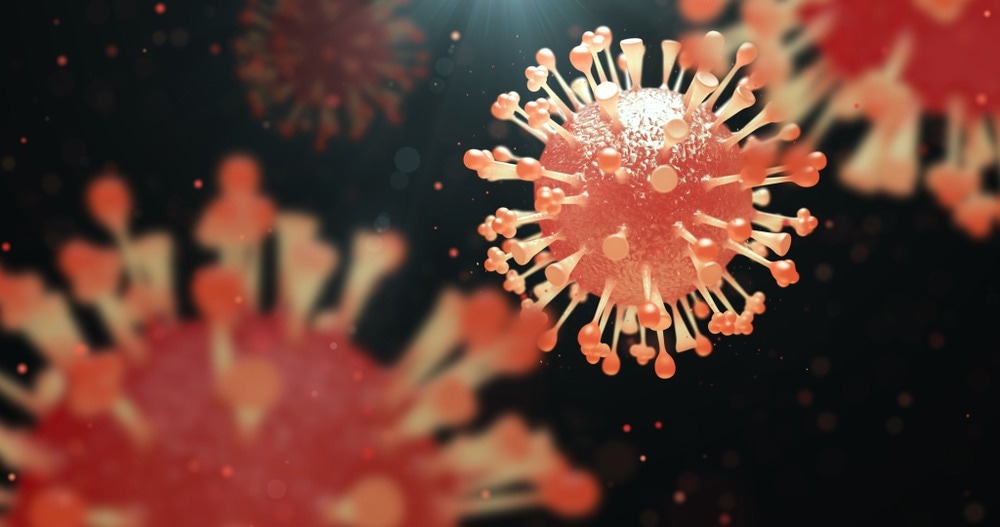
 *Important notice: bioRxiv publishes preliminary scientific reports that are not peer-reviewed and, therefore, should not be regarded as conclusive, guide clinical practice/health-related behavior, or treated as established information.
*Important notice: bioRxiv publishes preliminary scientific reports that are not peer-reviewed and, therefore, should not be regarded as conclusive, guide clinical practice/health-related behavior, or treated as established information.
While the severe acute respiratory syndrome coronavirus 2 (SARS-CoV-2) and the influenza A virus (IAV) are current threats to human health worldwide, not much is known about how their infectivity is modulated by environmental factors. A new preprint examines the response to these pathogens in the nose, which is the primary portal of entry for both.

Introduction
IAV affects about 8% of the American population yearly, while over 6.6 million people died from the coronavirus disease 2019 (COVID-19) following SARS-CoV-2 infection worldwide. Both infections can cause severe disease, especially in older and frailer patients.
Respiratory pathogens are first encountered by immune cells in the respiratory epithelium. Little study has examined the differences in the types of epithelial cells and temperatures in the upper vs. lower respiratory tract (URT and LRT, respectively).
The normal temperature of the URT is about 33oC, vs. 37oC in the LRT. Fever may see these rise to a maximum of 39oC. Higher temperatures following infection with rhinoviruses have been shown to induce antiviral responses, inhibiting viral replication at 37oC in mice but not in human cultures.
IAV infects airway and alveolar epithelial cells using sialic acid receptors, mostly on ciliated cells. These are scantier in the lower respiratory tract, and IAV, therefore, infects type 1 pneumonocytes in the lungs in addition.
SARS-CoV-2 infects goblet and ciliated cells using the angiotensin-converting enzyme 2 (ACE2) receptor, though other priming proteases are also necessary.
Severe IAV infection is associated with a lower antiviral response, a poorer interferon profile, and increased inflammation, resulting in lung injury. With SARS-CoV-2, the intensity of inflammation is typically lower compared to IAV.
The current study, available on the preprint server bioRxiv*, sought to tie together the effect of temperature on the host immune responses in cultures simulating the human nasal epithelium.
What does the study show?
The study demonstrates the impact of temperature on viral replicative fitness as well as the host response to the virus. Secondly, the researchers found that cultures infected by SARS-CoV-2 showed a delayed transcriptional response compared to IAV.
At a temperature of 37oC, SARS-CoV-2 showed faster replication initially, compared to 33oC. At the lower temperature, it was slower to replicate than IAV, which showed comparable replication at both temperatures.
Following IAV infection, the nasal epithelial cells (NECs) produced interferons, cytokines, and chemokines belonging to the inflammatory or innate immune pathways at higher levels compared to SARS-CoV-2 infection. The higher the fever, the greater the production of these cytokines.
The inflammatory cytokine response with SARS-CoV-2 was significantly lower at all viral loads compared to IAV, except for late infected cells at high temperatures. At 37oC, SARS-CoV-2-infected cells showed little difference in transcriptional profile from mock-infected cells.
This suggests a “dampened or delayed innate immune response” to SARS-CoV-2 within NECs. The question remains as to whether this indicates actual suppression of the immune response or a delay in the induction of immune pathways.
Omics eBook

However, such a delay helps explain why SARS-CoV-2 infection is associated with a more severe clinical profile than IAV since inadequate interferon responses correlate with a higher risk for severe disease. Much earlier research has shown the ability of SARS-CoV-2 to inhibit interferon signaling pathways.
Both temperature and the type of virus impact the host infection response. At 33oC, cells were strongly keratinized, with some keratin types usually found to predominate in the tongue and palate. This may mean that the respiratory tract differentiates in part as a response to temperature cues.
Another explanation is that keratinization, which is important in wound healing, may show the ability of these cells to sustain and recover from injury caused by viral infection faster.
Both lower temperatures and SARS-CoV-2 infection are associated with slower infection responses, therefore. At 37oC, the host infection response slowly becomes perceptible but could well be driven by host signals such as damage-associated molecular patterns (DAMPs) rather than pathogen-associated molecular patterns (PAMPs).
With IAV, the same amount of infectious virus was produced over time at either temperature, but the host response was different, being seen most clearly at 96 hours post-infection (HPI). This contrasts with other studies that show innate responses being related to the viral load and needs further validation.
“These data indicate that physiological ranges of temperature should be accounted for when evaluating host responses to infection.”
With IAV, membrane- and cell signaling-related pathways became active following infection. This was not the case for SARS-CoV-2 infection, which triggered transcriptional pathways related to the cytoskeleton and cellular projections.
This could perhaps be explained in part by the recent finding that the latter uses epithelial cell microvilli and cilia to facilitate infection and spread to adjacent cells, whereas IAV uses membrane transport systems to enter the host cell and replicate. These insights could help identify other host factors essential for infection, providing other potential therapeutic or preventive targets.
Earlier studies showed that all SARS-CoV-2 variants do not show the same temperature sensitivity, with the ancestral and Delta variants being most sensitive to lower temperatures. These have been found to infect lung cells rather than URT cells, unlike Omicron, which is less sensitive and targets the URT.
Mutations in the IAV also affect some cellular proteins that could impact temperature sensitivity. The proteins that affect this characteristic in both viruses could provide attractive targets for intervention.
Both viruses showed a common pool of differentially regulated genes (DRGs) that are involved in the host immune response, membrane fusion, and genome defense. These common target genes could help treat both infections more effectively, especially since immune pathways are independent of temperature.
“While the baseline antiviral response at different temperatures remains consistent, there may be metabolic or signaling changes that affect how well the cultures are able to adapt to new pressures such as infection.”
SARS-CoV-2 has earlier been shown to replicate less efficiently at higher temperatures in an interferon-independent manner. Further research will be needed to show if this common response occurs with all viruses that attack the respiratory tract and the various host proteins involved in regulating viral replication at various temperatures.
What are the implications?
“Taken together, these data indicate that temperature should be accounted for when evaluating human pathogens and can assist in identifying new treatment strategies as well as understanding the basic biology underlying respiratory virus infection of epithelial cells.”

 *Important notice: bioRxiv publishes preliminary scientific reports that are not peer-reviewed and, therefore, should not be regarded as conclusive, guide clinical practice/health-related behavior, or treated as established information.
*Important notice: bioRxiv publishes preliminary scientific reports that are not peer-reviewed and, therefore, should not be regarded as conclusive, guide clinical practice/health-related behavior, or treated as established information.
- Preliminary scientific report. Resnick, J., Beer, M. and Pekosz, A. (2023) "Early transcriptional responses of human nasal epithelial cells to infection with Influenza A and SARS-CoV-2 virus differ and are influenced by physiological temperature". bioRxiv. doi: 10.1101/2023.03.07.531609. https://www.biorxiv.org/content/10.1101/2023.03.07.531609v1
Posted in: Medical Science News | Medical Research News | Disease/Infection News
Tags: ACE2, Angiotensin, Angiotensin-Converting Enzyme 2, Cell, Cell Signaling, Chemokines, Cilia, Coronavirus, Coronavirus Disease COVID-19, covid-19, Cytokine, Cytokines, Cytoskeleton, Enzyme, Fever, Genes, Genome, Immune Response, Inflammation, Influenza, Interferon, Interferons, Lungs, Membrane, Omicron, Pathogen, Receptor, Research, Respiratory, Respiratory Virus, SARS, SARS-CoV-2, Severe Acute Respiratory, Severe Acute Respiratory Syndrome, Syndrome, Tongue, Virus, Wound, Wound Healing

Written by
Dr. Liji Thomas
Dr. Liji Thomas is an OB-GYN, who graduated from the Government Medical College, University of Calicut, Kerala, in 2001. Liji practiced as a full-time consultant in obstetrics/gynecology in a private hospital for a few years following her graduation. She has counseled hundreds of patients facing issues from pregnancy-related problems and infertility, and has been in charge of over 2,000 deliveries, striving always to achieve a normal delivery rather than operative.
Source: Read Full Article
